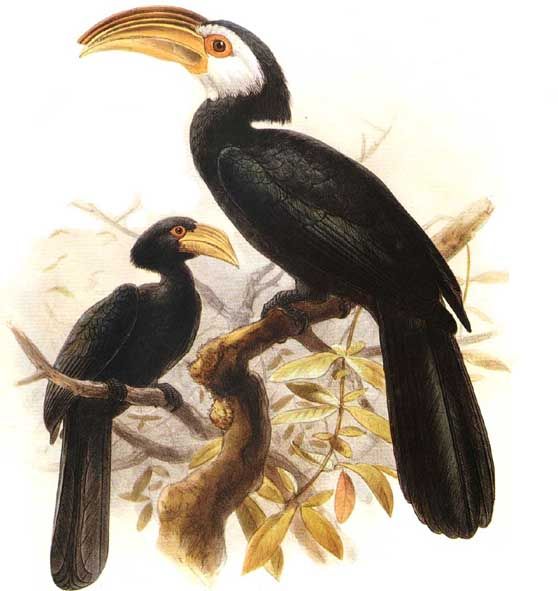|
| 질의: bucerotidae | 결과: 109번째/121 | |
Sulawesi Hornbill (Penelopides exarhatus) - Wiki
| 제목: | Sulawesi Hornbill (Penelopides exarhatus) - Wiki
| |

| 해상도: 558x591
파일크기: 40899 Bytes
등록시간: 2007:11:27 17:23:37
|
Sulawesi Hornbill
From Wikipedia, the free encyclopedia
Order: Coraciiformes
Family: Bucerotidae
[Photo] Sulawesi Hornbill - Penelopides exarhatus - Calao des C??l??bes. Author: Daniel Giraud Elliot (1835-1915). Source: http://www.oiseaux.net/photos/daniel.giraud.elliot/sulawesi.hornbill.1.html
The Sulawesi Hornbill, Penelopides exarhatus also known as Temminck's Hornbill, Sulawesi Tarictic Hornbill or Sulawesi Dwarf Hornbill is a medium-sized, approximately 53cm long, black hornbill with a large, yellowish bill. The male has a yellow face and throat, and a reddish casque on top of bill. The female has all black plumage with a darker and smaller bill.
An Indonesian endemic, the Sulawesi Hornbill is distributed in the tropical lowland, swamps and primary forests of Sulawesi, from sea-level to altitude up to 1,100 metres. There are two subspecies of the Sulawesi Hornbill. The nominate form, P. e. exarhatus occurs in north Sulawesi. The second subspecies, P. e. sanfordi is found in central, east and south Sulawesi, Buton and Muna Island.
As with other hornbills, the Sulawesi Hornbill is believed to be a monogamous species. The diet consists mainly of fruits, figs and insects. The female seals itself inside a tree hole for egg-laying. During this time, the male will provide food for the female and the young.
Widespread and common throughout its native range, the Sulawesi Hornbill is evaluated as Least Concern on the IUCN Red List of Threatened Species.
http://en.wikipedia.org/wiki/Sulawesi_Hornbill
| The text in this page is based on the copyrighted Wikipedia article shown in above URL. It is used under the GNU Free Documentation License. You may redistribute it, verbatim or modified, providing that you comply with the terms of the GFDL. |
|
^o^
동물그림창고 똑똑전화 누리집
^o^
|
|